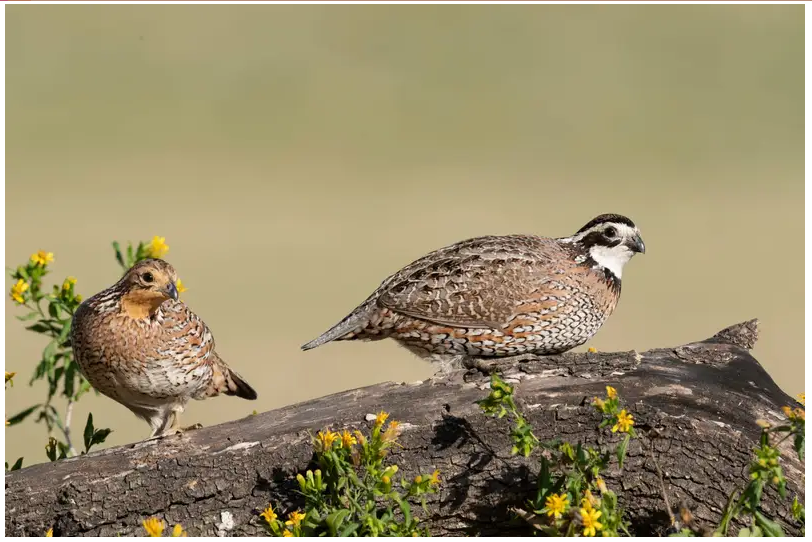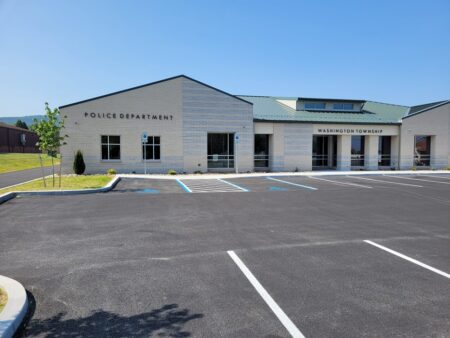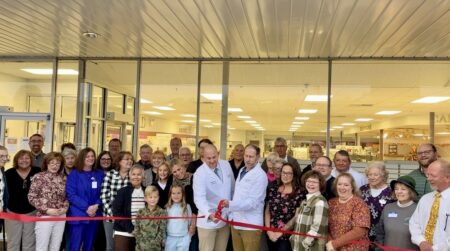CHAMBERSBURG- A wildlife species native to Pennsylvania but long missing is back home again.
The Pennsylvania Game Commission released 50 bobwhite quail on the grounds of Letterkenny Army Depot in Franklin County. That brings to 76 the number of bobwhites planted on site in recent weeks, with one more release to go.
The birds – which should increase their numbers exponentially over the course of the spring breeding season – are the final brick in a foundation the Game Commission began laying more than a decade ago.
“This is an exciting time, the next chapter in a story of wildlife restoration,” said Game Commission Executive Director Bryan Burhans. “It’s difficult – not impossible, but difficult – to take any species that’s disappeared and bring it back again.
“But Pennsylvania has a proud history of doing just that. White-tailed deer, elk, bald eagles, peregrine falcons, all were gone of nearly so from our borders and now are thriving across Pennsylvania. With today’s release, maybe, just maybe, bobwhites are on the same path.”
Bobwhites are by nature a boom-and-bust-type of species, incredibly productive breeders, but with short lifespans and prone to dramatic population swings. In good habitat, though, they can survive all that long-term.
They certainly did in Pennsylvania, for a long time. The Keystone State had quail in all 67 counties in the mid-1800s, and they remained abundant in many of those places into the mid- 20th century.
But land use changes not necessarily friendly to quail changed everything.
Bobwhites, as well as other grassland birds, require what’s known as “old field” habitat that provides food, nesting cover and shelter. Pennsylvania once had lots of it in the form of small family farms. According to the U.S. Department of Agriculture’s National Agricultural Statistics Service (NASS), the Keystone State had 202,250 farms in 1920, covering 61% of the state’s total land mass.
Many of those disappeared over the ensuing decades, though. NASS’s latest, just-released U.S. Census of Agriculture says Pennsylvania had just 49,053 farms in 2022, covering less than 25% of the state.
Not surprisingly, quail disappeared as those farms did. The Game Commission officially declared them extirpated – gone from within our state borders – after conducting extensive surveys in 2013 and 2014. But it’s likely they were lost even earlier, in the late 1990s or early 2000s, said Andrew Ward, the Game Commission’s quail biologist.
In the years since, the Game Commission has been working to bring them back. Step one was finding a potential restoration site and creating as much bobwhite quail habitat there as possible.
Enter Letterkenny. Starting in 2017, the Game Commission and Letterkenny began mowing, seeding, disking, burning, herbiciding and otherwise managing about 2,700 acres of the U.S. Army installation focused on the repair and modernization of air and missile defense systems.
Todd Black, Deputy to the Commander at Letterkenny, said today’s quail release wouldn’t have been possible without those countless hours spent developing the Bobwhite Quail Focus Area – the only of its kind in Pennsylvania.
“The release of northern bobwhite quail into their new home highlights how Letterkenny takes proactive measures and works with our partners in the Game Commission to adapt operations and steward Army lands,” Black said. “Our investment in species habitat not only ensures mission access and flexibility of use but contributes to our overall readiness as an organization.”
Letterkenny and the Game Commission put all that work up for review, too. Bobwhite experts from around the state and country were brought to Letterkenny at multiple times in recent years, to first assess the site’s habitat potential and then grade the work being done to improve it. In 2023, 65 such pros from the National Bobwhite and Grasslands Initiative’s technical committee declared the site ready for birds.
“We now have warm-season, bunch and clump grasses to provide nesting cover,” Ward said. “We have forbs and legumes to provide brood habitat as well as food. And we have shrubby, woody cover that offers protection from the elements as well as from predators.”
Quail were the last missing piece. The Game Commission has secured them from three sites: 11 so far from Fort Barfoot, an Army National Guard installation in Virginia; 15 from Fort Knox, another Army site in Kentucky; and 50 from Tall Timbers, a Florida-based land trust.
Another trapping effort is planned next week at Fort Barfoot, with the birds subsequently released at Letterkenny.
Combined, those quail are enough, in cases captured from source sites as close to Pennsylvania as could be arranged, to make a successful restoration possible, Ward added.
Possible, but not guaranteed. The bobwhites released this spring still need some attention and help. The plan is to provide it.
“We’re not just dropping these birds and walking away,” Ward said. “We will continue to support, monitor and study them.”
For starters, the Game Commission, Letterkenny and other conservation partners will continue to remake and sustain suitable habitat as outlined in a quail management plan that runs through 2030.
Beyond that, two graduate students from the University of Delaware will be on site this summer to see how well the quail – and other grassland species in decline over the long haul for the same reasons – are faring.
Every quail released at Letterkenny this year was given a leg band. A subset was also outfitted with radio collars. One graduate student will, using small electronic devices located in a grid pattern across Letterkenny, track them to track survival, habitat use, nesting success, movement and more.
The other student will examine how additional grassland birds – which are, as a whole, are the most-imperiled type – are using that same habitat. Already there are encouraging signs, though. Yellow breasted chats, bobolinks and horned larks, along with the Pennsylvania-endangered Dickcissel, have been seen for the first time or in increased numbers at Letterkenny in recent years.
In the meantime, there will be no hunting of bobwhites at Letterkenny anytime soon. Restoring populations to huntable levels is not even a goal right now, Ward said. Rather, the intent is that bobwhites and all those other species will not only thrive at Letterkenny, but expand into the surrounding countryside, as well.
Even that may take some time. Restoring eagles to their current abundance, for example, was a decades-long process. But the bobwhite’s return is at long last underway.
“This is an opportunity to help bobwhites in ways we never have before,” Burhans said. “I can’t wait to see where this project takes us.”





















